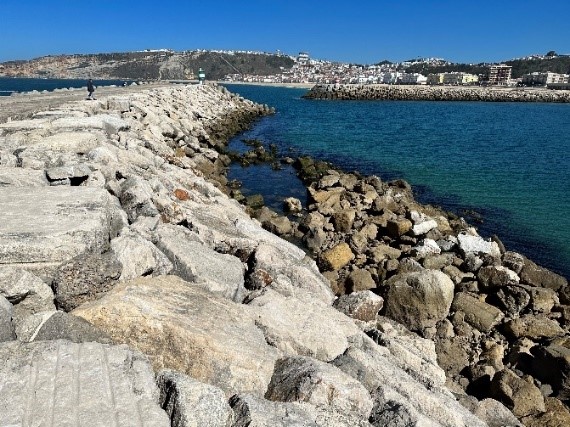

Ports and their breakwaters play a critical role in protecting docked ships and vessels, ensuring that loading and unloading operations are conducted safely. The construction of RMB requires substantial capital investment; however, damage caused by wave action is common (Figure 2), making it crucial to predict their structural evolution.
The ProCoast-3D project aims to address issues related to the development of measurement techniques and procedures for predicting the behavior of RMBs under wave action. These procedures will contribute to a predictive system and decision-support tool for RMB performance, currently under development at LNEC.


Figura 2: Examples of damage to the armor layer of rubble-mound breakwaters.
The challenges to be addressed include:
a) defining relevant sequences of sea states impacting RMBs based on the local wave climate, including extreme events and the effects of climate change;
b) selecting the most effective and economical combination of physical model techniques to analyze RMB stability;
c) modeling the response of the armor layer to incoming waves using new empirical formulas applied through a probabilistic approach.
Different complementary methods will be employed, including:
a) Field data: monitoring of the Ericeira RMB in terms of armor layer damage, using the ANOSOM-WEB platform;
b) Numerical and physical modeling of RMB behavior under wave action to enable long-term modeling of the structure’s response.
b1) Physical modeling of RMB behavior to determine the response to a set of selected wave conditions and climate change scenarios. The physical model data will also be used to calibrate, validate, and test numerical models;
b2) Empirical modeling to predict the evolution of damage to the armor layer in response to incoming waves. This will allow for long-term predictions of RMB evolution, using observed monitoring data and knowledge of the wave regime at the structure’s location. These new models will be compared with existing formulas;
c) The results of the numerical and physical models will be incorporated into the predictive system and decision-support tool for RMB performance, under development at LNEC.
The key expected outcomes that will advance the state of the art in various aspects are:
• A new set of small-scale physical model test data that can be used to define and verify empirical models for RMB behavior under wave action and to calibrate numerical models;
• Validated new empirical damage evolution formulas for the response of the armor layer to incoming waves;
• An innovative methodology for RMBs that can be easily extended to other ports.